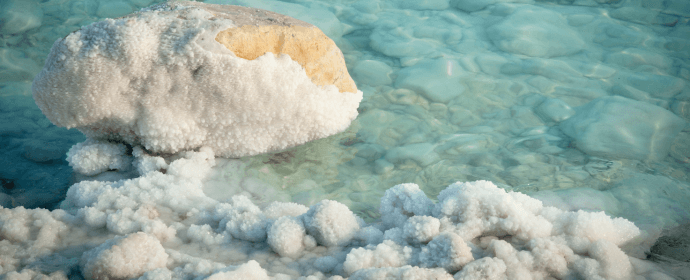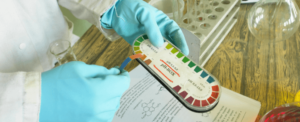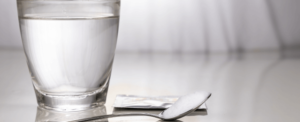Have you ever considered is salt water a pure substance or a mixture? Or, why does saltwater feel different from freshwater? The solution is found in the very structure of saltwater. Is it a pure substance, such as gold, or a mixture, such as a salad? Let’s go on a scientific quest to solve this salty enigma.
You might think salt water is a pure substance because of its smooth appearance and taste. After all, it’s only water with some salt in it, right? But wait a minute, sailor! The reality is more fascinating than you might think.
Saltwater is an interesting mixing of two pure substances: water (H2O) and salt (NaCl). When salt is added to water, the salt crystals dissolve, breaking into microscopic particles known as ions. These ions, sodium (Na+) and chloride (Cl-), disperse uniformly in the water, resulting in a homogeneous solution.
But how do we tell the difference between pure substances and mixtures? Pure substances, such as gold or water, have a consistent makeup. Their molecules are the same no matter where they originate from. In contrast, mixtures can have changing quantities of their constituents. The salinity of seawater, for example, varies depending on location and season.
So, now that you know saltwater is a mixture, you might wonder why this distinction is so essential. On the other hand, understanding the difference between pure substances and mixtures is critical for many scientific fields, including chemistry, biology, and environmental science. It is also useful in fields such as water treatment and desalination.
Classification of Saltwater as a Mixture
We must first distinguish between pure substances and mixes to understand why saltwater is a mixture.
- Pure substances have a fixed and constant composition. This means that the proportions of the elements or compounds that comprise the substance remain constant. Water, for example, is always made up of two hydrogen atoms for every one oxygen atom, regardless of where it comes from.
- Mixtures differ in composition. This means that the component proportions can fluctuate. The salinity of seawater, for example, can vary depending on location and time of year.
Saltwater is a mixture because its salinity, the amount of dissolved salt, can vary.
Components of Saltwater
Because the amount of dissolved salt in saltwater varies, it is a combination. Seawater salinity varies between 3% and 5%, depending on factors such as evaporation, precipitation, and freshwater intake from rivers and glaciers.
Distinguishing between Pure Substances and Mixtures
There are several significant distinctions between pure substances and mixtures:
- Composition: Pure substances have a fixed and constant makeup, whereas mixes have a fluctuating composition.
- Separability: Pure substances can be separated chemically into constituent elements or compounds, whereas mixtures can be physically separated.
- Appearance: Pure substances frequently have a uniform appearance; however mixes might be homogeneous or heterogeneous.
Properties of Pure Water and Its Neutral pH
Pure water has no color, odor, or taste. It has a pH of 7, making it neither acidic nor alkaline. Water is also an excellent solvent, meaning that it can dissolve a wide range of other substances.
The Role of pH in Determining Acidity or Alkalinity
The pH scale determines whether a solution is acidic or alkaline. A pH less than 7 indicates acidity, while a pH greater than 7 indicates alkalinity. Pure water has a pH of 7, suggesting that it is neutral.
Factors Affecting the pH of Water
Several factors can influence the pH of water, including the presence of dissolved compounds, temperature, and pressure. Because of the presence of dissolved salts, the pH of seawater is somewhat alkaline.
So buckle in, mateys, as we dig into the enthralling world of saltwater and learn the fascinating truth behind its classification as a mixture. We’ll examine its constituents, differentiate it from pure chemicals, and determine its scientific importance. Get ready for a salty voyage!
Why is salt a mixture?
Salt, also known as sodium chloride (NaCl), is a combination since it is made up of two separate elements: sodium (Na) and chlorine (Cl). These two compounds are blended in a constant 1:1 ratio, but their unique identities are preserved within the mixture. This means we can separate the sodium and chlorine using physical methods like evaporation or distillation.
Is salt and water mixed a mixture?
Yes, mixing salt and water is a combination. When salt is dissolved in water, the salt molecules disintegrate into individual ions (Na+ and Cl-) spread uniformly throughout the water. This mixture appears to be a single substance due to its uniformity. On the other hand, the sodium and chlorine ions retain their unique identities, and the combination can be separated into its constituents using physical techniques such as evaporation or crystallization.
Why salt and water is a mixture and not a compound?
Because it comprises two distinct substances, salt and water are a mixture. Conversely, compounds are created by the chemical bonding of two or more elements in a defined ratio. In a compound, the ingredients mix to generate a new material with distinct qualities. The properties of a combination differ from the attributes of its separate constituents.
Is pure water a mixture?
No, pure water is not a combination. It is a pure substance since it only contains one type of molecule: H2O. Pure water’s hydrogen and oxygen atoms are chemically linked in a stable 2:1 ratio. This indicates that we can’t separate hydrogen and oxygen using physical means.
As we come to the end of our route through the salty mystery that is saltwater, we have a fresh respect for the complicated chemistry that supports the very essence of the sea. Saltwater, the lifeblood of marine ecosystems, is a harmonic mixture of water and salt, with each component playing an essential function in the delicate balance of the ocean’s ecosystem.
knowledge the difference between pure substances and mixes is more than just an academic exercise; it has far-reaching ramifications for our understanding of the world around us. Chemistry principles permeate every element of our existence, from the composition of the air we breathe to the qualities of the food we eat.
Let us remember the lessons from saltwater as we continue to explore the ocean’s vastness. To preserve the delicate balance of the ecosystems in our world and keep the sea’s salty symphony of life in tune, let us work to preserve it.



Leave a Reply